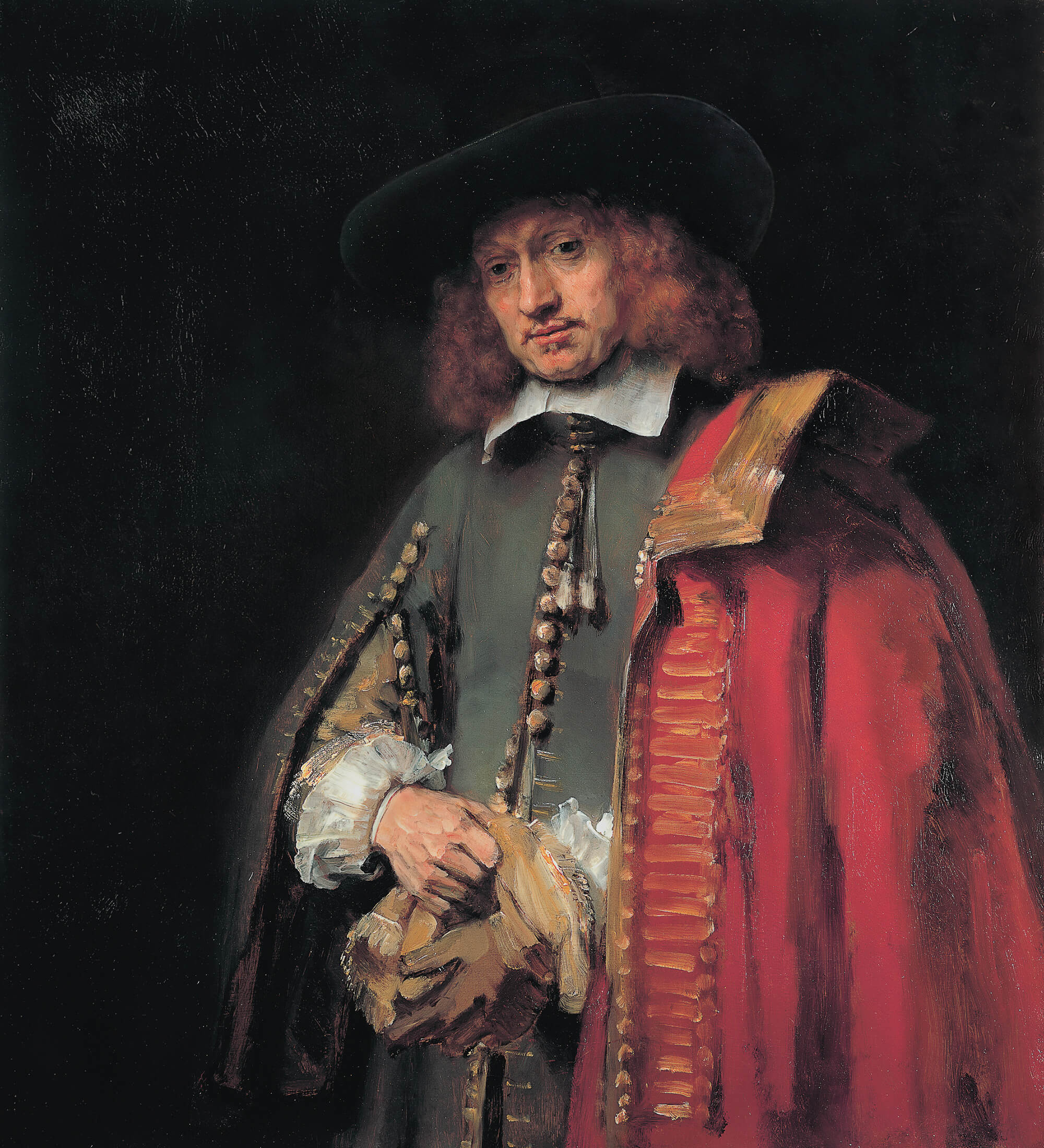In some ways a straightforward portrait of a friend, this picture is packed full of paradoxes and deep secrets, too. The nobleman’s finery, exquisitely tailored in rich, deep colours, contrasts with the man’s hesitant bearing. Why the reticent, suspicious tilt of the head; the unsettling melancholy in his eyes? The hat’s shadow guides our eyes to the quiet anxiety of his expression: looking at us and yet clearly elsewhere, too. Look at the paintwork around the glove, radically ahead of its time. It’s wild, impressionistic and unresolved: is he putting the glove on or taking it off, returning or leaving? We can’t know. Rembrandt’s genius here is simultaneously to paint a man and human nature itself, showing the subject with beauty, while gently asking big questions: about the threshold between public and private, between action and reflection, between the internal and the external. Who are we in public; what do we hide? When, how, and why do we become one persona or the other? And where do we find our true self?

 Consolation – Edvard Munch
Consolation – Edvard Munch